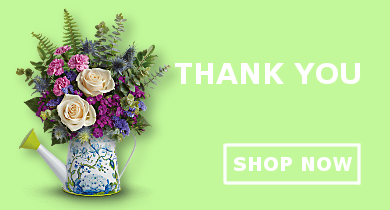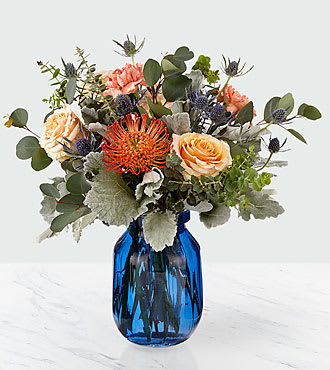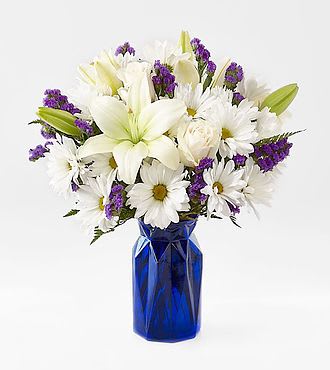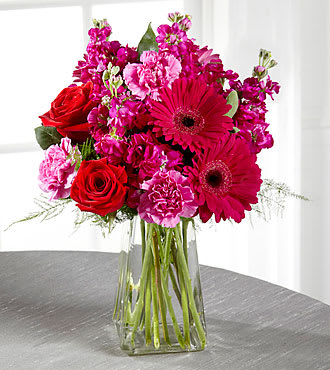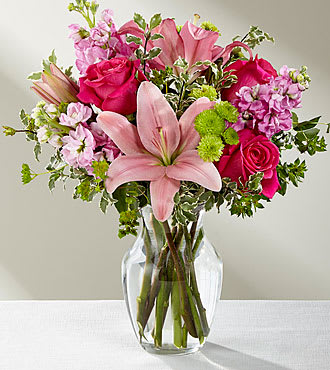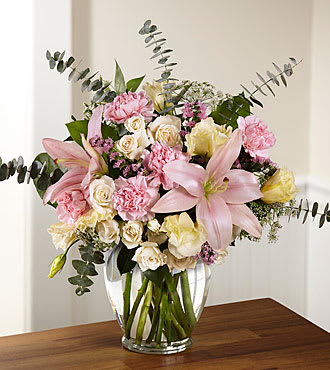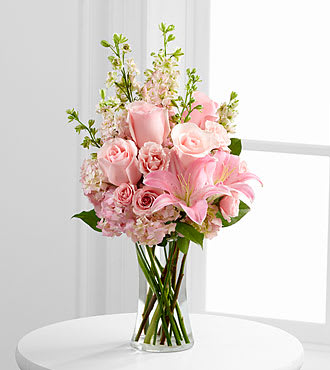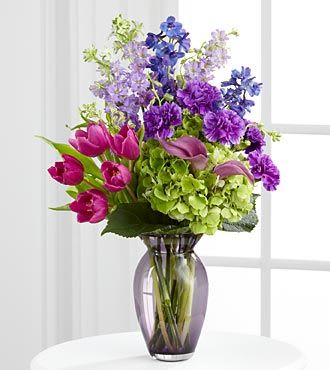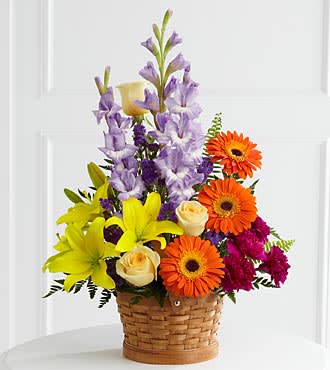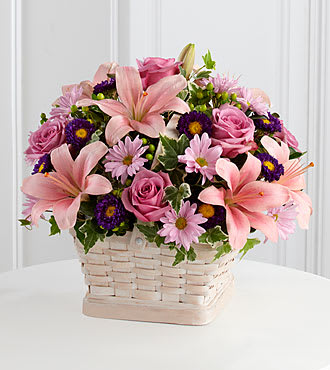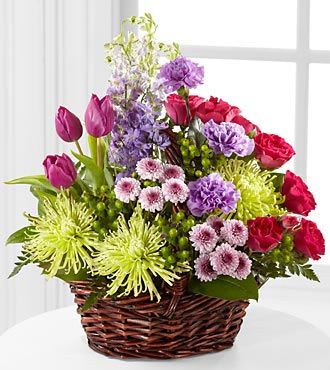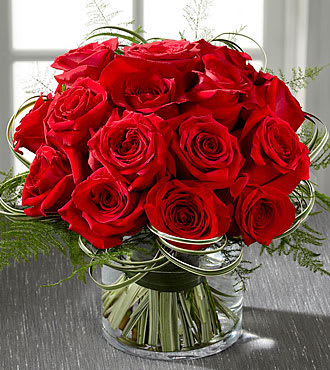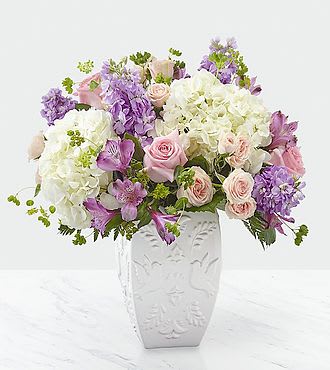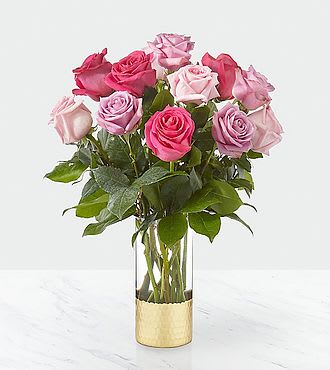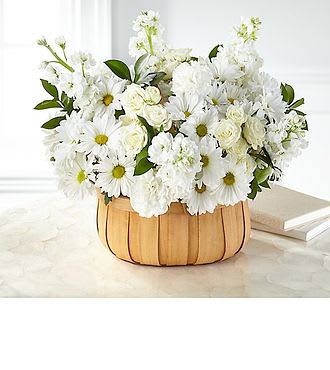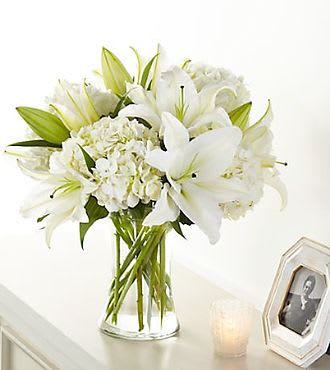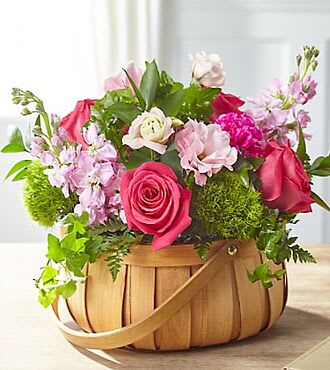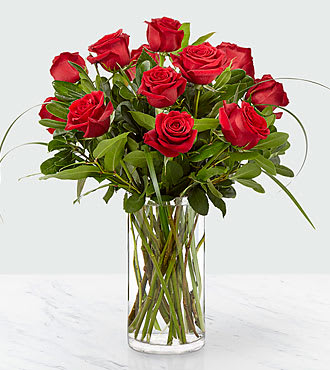- Birthday
- Best Sellers
- Under $80
- $54.90
- $49.90
- $49.90
- $49.90
- $49.90
- $69.90
- $89.90
- $89.90
- $87.90
- $97.90
March 1, 2025
Carlos March Floral Selection
The Bloom Central flower delivery of the month for March in Carlos is the Birthday Brights Bouquet
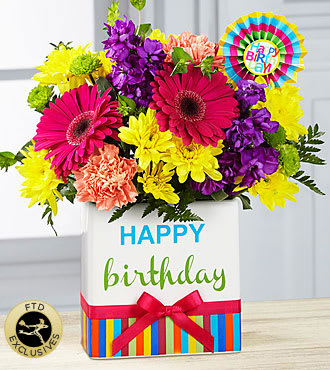
The Birthday Brights Bouquet from Bloom Central is a delightful floral arrangement that anyone would adore. With its vibrant colors and cheerful blooms, it's sure to bring a smile to the face of that special someone.
This bouquet features an assortment of beautiful flowers in shades of pink, orange, yellow, and purple. The combination of these bright hues creates a lively display that will add warmth and happiness to any room.
Specifically the Birthday Brights Bouquet is composed of hot pink gerbera daisies and orange roses taking center stage surrounded by purple statice, yellow cushion poms, green button poms, and lush greens to create party perfect birthday display.
To enhance the overall aesthetic appeal, delicate greenery has been added around the blooms. These greens provide texture while giving depth to each individual flower within the bouquet.
With Bloom Central's expert florists crafting every detail with care and precision, you can be confident knowing that your gift will arrive fresh and beautifully arranged at the lucky recipient's doorstep when they least expect it.
If you're looking for something special to help someone celebrate - look no further than Bloom Central's Birthday Brights Bouquet!
Carlos MN Flowers
Looking for flower delivery?
We have beautiful floral arrangements and lively green plants that make the perfect gift for an anniversary, birthday, holiday or just to say I'm thinking about you. We can make a flower delivery to anywhere in Carlos MN including hospitals, businesses, private homes, places of worship or public venues. Orders may be placed up to a month in advance or as late 1PM on the delivery date if you've procrastinated just a bit.
Two of our most popular floral arrangements are the Stunning Beauty Bouquet (which includes stargazer lilies, purple lisianthus, purple matsumoto asters, red roses, lavender carnations and red Peruvian lilies) and the Simply Sweet Bouquet (which includes yellow roses, lavender daisy chrysanthemums, pink asiatic lilies and light yellow miniature carnations). Either of these or any of our dozens of other special selections can be ready and delivered by your local Carlos florist today!
Carlos Flower Shops
Would you prefer to place your flower order in person rather than online? Here are a few Carlos florists to contact:
Albany Country Floral & Gifts
401 Railroad Ave
Albany, MN 56307
Broadway Floral
2307 S Broadway St
Alexandria, MN 56308
Custer Floral & Greenhouse
815 2nd Ave NE
Long Prairie, MN 56347
Freeport Floral Gifts
Freeport, MN 56331
Hoffman Realty
613 Atlantic Ave
Morris, MN 56267
Over The Rainbow
123 1st St SW
Wadena, MN 56482
Spotlight on Lotus Pods
The Lotus Pod stands as perhaps the most visually unsettling addition to the contemporary florist's arsenal, these bizarre seed-carrying structures that resemble nothing so much as alien surveillance devices or perhaps the trypophobia-triggering aftermath of some obscure botanical disease ... and yet they transform otherwise forgettable flower arrangements into memorable tableaux that people actually look at rather than merely acknowledge. Nelumbo nucifera produces these architectural wonders after its famous flowers fade, leaving behind these perfectly symmetrical seed vessels that appear to have been designed by some obsessively mathematical extraterrestrial intelligence rather than through the usual chaotic processes of terrestrial evolution. Their appearance in Western floral design represents a relatively recent development, one that coincided with our cultural shift toward embracing the slightly macabre aesthetics that were previously confined to art-school photography projects or certain Japanese design traditions.
Lotus Pods introduce a specific type of textural disruption to flower arrangements that standard blooms simply cannot achieve, creating visual tension through their honeycomb-like structure of perfectly arranged cavities. These cavities once housed seeds but now house negative space, which functions compositionally as a series of tiny visual rests between the more traditional floral elements that surround them. Think of them as architectural punctuation, the floral equivalent of those pregnant pauses in Harold Pinter plays that somehow communicate more than the surrounding dialogue ever could. They draw the eye precisely because they don't look like they belong, which paradoxically makes the entire arrangement feel more intentional, more curated, more worthy of serious consideration.
The pods range in color from pale green when harvested young to a rich mahogany brown when fully matured, with most florists preferring the latter for its striking contrast against typical flower palettes. Some vendors artificially dye them in metallic gold or silver or even more outlandish hues like electric blue or hot pink, though purists insist this represents a kind of horticultural sacrilege that undermines their natural architectural integrity. The dried pods last virtually forever, their woody structure maintaining its form long after the last rose has withered and dropped its petals, which means they continue performing their aesthetic function well past the expiration date of traditional cut flowers ... an economic efficiency that appeals to the practical side of flower appreciation.
What makes Lotus Pods truly transformative in arrangements is their sheer otherness, their refusal to conform to our traditional expectations of what constitutes floral beauty. They don't deliver the symmetrical petals or familiar forms or predictable colors that we've been conditioned to associate with flowers. They present instead as botanical artifacts, evidence of some process that has already concluded rather than something caught in the fullness of its expression. This quality lends temporal depth to arrangements, suggesting a narrative that extends beyond the perpetual present of traditional blooms, hinting at both a past and a future in which these current flowers existed before and will cease to exist after, but in which the pods remain constant.
The ancient Egyptians regarded the lotus as symbolic of rebirth, which feels appropriate given how these pods represent a kind of botanical afterlife, the structural ghost that remains after the more celebrated flowering phase has passed. Their inclusion in modern arrangements echoes this symbolism, suggesting a continuity that transcends the ephemeral beauty of individual blooms. The pods remind us that what appears to be an ending often contains within it the seeds, quite literally in this case, of new beginnings. They introduce this thematic depth without being heavy-handed about it, without insisting that you appreciate their symbolic resonance, content instead to simply exist as these bizarre botanical structures that somehow make everything around them more interesting by virtue of their own insistent uniqueness.





